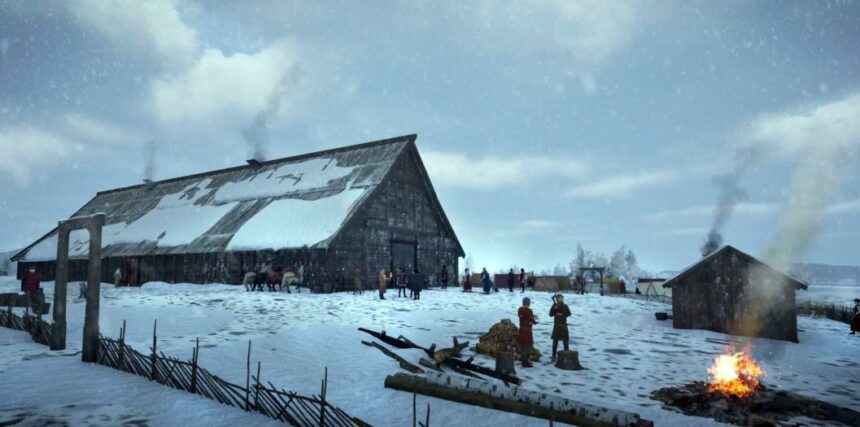Norway: Siltanews – News Desk
This is how the experts envision the stately building at Sem might have appeared. Since the building was unusually wide, at 16 meters, with a span of 9 meters between the roof-bearing columns, the roof must have had a steep slope to avoid excessive snow load during the winter. The roof ridge may have been 11-12 meters high, providing room for upper floors and an attic inside.
There were high expectations for the excavations at Øvre Eiker near Oslo in the summer of 2023, and the archaeologists were not disappointed. They discovered a longhouse with unusually large proportions at Sem. The unique feature of the building that once stood there is its width: It was 16 metres wide, with a 9-metre span between the roof-supporting columns in the central nave. This required beams 9 meters long across the structure.
“We’d have to go back to the 1400s to find something similar, so we initially thought the building was from that period,” project leader Jes Martens tells NTB. He is an associate professor at the University of Oslo’s Museum of Cultural History.
However, carbon dating showed that the building was constructed sometime in the 200s – over 1,000 years earlier than they had thought. The archaeologists doubted the dating, but further testing confirmed the age of the structure.
“It was hard to believe. The longhouses previously found from that period were 5-7 meters wide. Such houses would have fit inside this enormous house at Sem, that’s how large it is,” says Martens.
According to Martens, the building is also larger than any known structures from Denmark or Sweden during the same period.
“A building so exceptional must have represented something very special. It’s a visible sign of power and great wealth. Could it have been an early royal hall? It’s not unthinkable, given its central location in the landscape and abundant access to resources from both land and water,” says Martens.
In the 200s, the climate was relatively mild, and water levels were much higher. Large ships could have sail all the way to Sem.
If a king ruled there during the Iron Age – 700 years before Harald Fairhair, traditionally considered the first king of Norway – history might need to be rewritten.
“There are some old Scandinavian texts that mention kings dating back to the time of Christ. These stories have been dismissed as myths, but maybe there’s some truth to them,” says Martens.
So far, archaeologists have only investigated about half of the site where the building stood. A partition wall runs across the house, dividing the excavated portion into two rooms: an eastern room, likely open at the gable, and a western room that may have been divided into stalls for housing animals.

